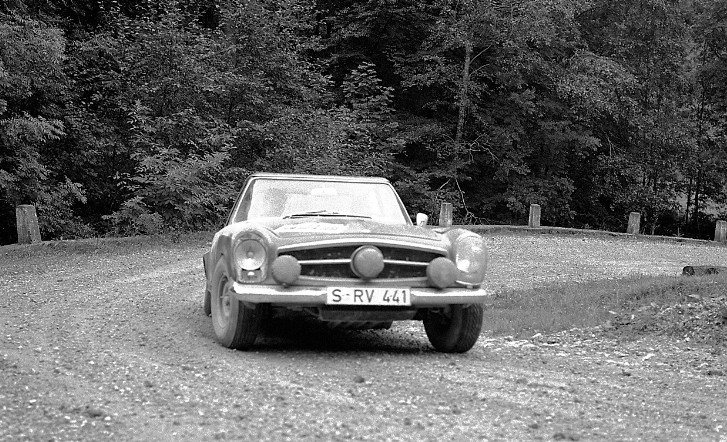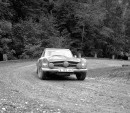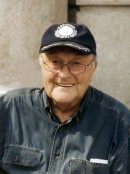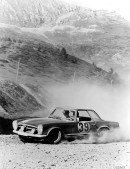From 27 to 31 August 1963, in an era when long-distance rallies were still a rather large part of motorsport normality, a not yet launched then Mercedes-Benz 230 SL W113 “Pagoda” won a 90-hour rally that spawned over 5,500 kilometers (3417 miles).
The rally was started in Spa, with the route follwinh Saarland, Baden-Wurttemberg and Bavaria before moving on to Austria, Italy and ex-Yugoslavia. After a slight detour through Romania and a short stop in Sofia, the cars were supposed to head back to Yugoslavia and Italy again, where the tough Alpine roads and mountain passes were awaiting the contestants.
Of the 129 cars that started, only 20 finished, with the 230 SL coming on top against all odds.
Since the new three-pointed star roadster was officially launched at the Frankfurt International Motor Show in the autumn of 1963, the car used for the amazing feat was a pre-production version, driven by Eugen Bohringer, with Hermann Eger as his co-pilot.
Unlike today's rally cars, the 230 SL didn't have a roll-cage fitted, the only protection in the case of an unfortunate accident coming from the world's first safety body ever put on a sports car – probably the most important new feature the model had at the time.
Another most talked-about feature was, naturally, represented by the car's styling, done by legendary Mercedes-Benz designer Paul Bracq. The dome-shaped hardtop was the element that gave the W113 its “Pagoda” nickname.
For the 1963 Spa-Sofia-Liege rally, the pre-production car's modifications consisted in a hardtop that was rigidly attached to its body, larger tanks for the onboard liquids – including fuel – reinforced suspension and a larger engine displacement.
The 2.6-liter inline six had 0.3 liters of extra cylinder displacement over the then upcoming road version, translating into a total power of around 170 hp compared to the standard 150 hp, as well as a lot more torque.
Of the 129 cars that started, only 20 finished, with the 230 SL coming on top against all odds.
Since the new three-pointed star roadster was officially launched at the Frankfurt International Motor Show in the autumn of 1963, the car used for the amazing feat was a pre-production version, driven by Eugen Bohringer, with Hermann Eger as his co-pilot.
Unlike today's rally cars, the 230 SL didn't have a roll-cage fitted, the only protection in the case of an unfortunate accident coming from the world's first safety body ever put on a sports car – probably the most important new feature the model had at the time.
Another most talked-about feature was, naturally, represented by the car's styling, done by legendary Mercedes-Benz designer Paul Bracq. The dome-shaped hardtop was the element that gave the W113 its “Pagoda” nickname.
For the 1963 Spa-Sofia-Liege rally, the pre-production car's modifications consisted in a hardtop that was rigidly attached to its body, larger tanks for the onboard liquids – including fuel – reinforced suspension and a larger engine displacement.
The 2.6-liter inline six had 0.3 liters of extra cylinder displacement over the then upcoming road version, translating into a total power of around 170 hp compared to the standard 150 hp, as well as a lot more torque.






